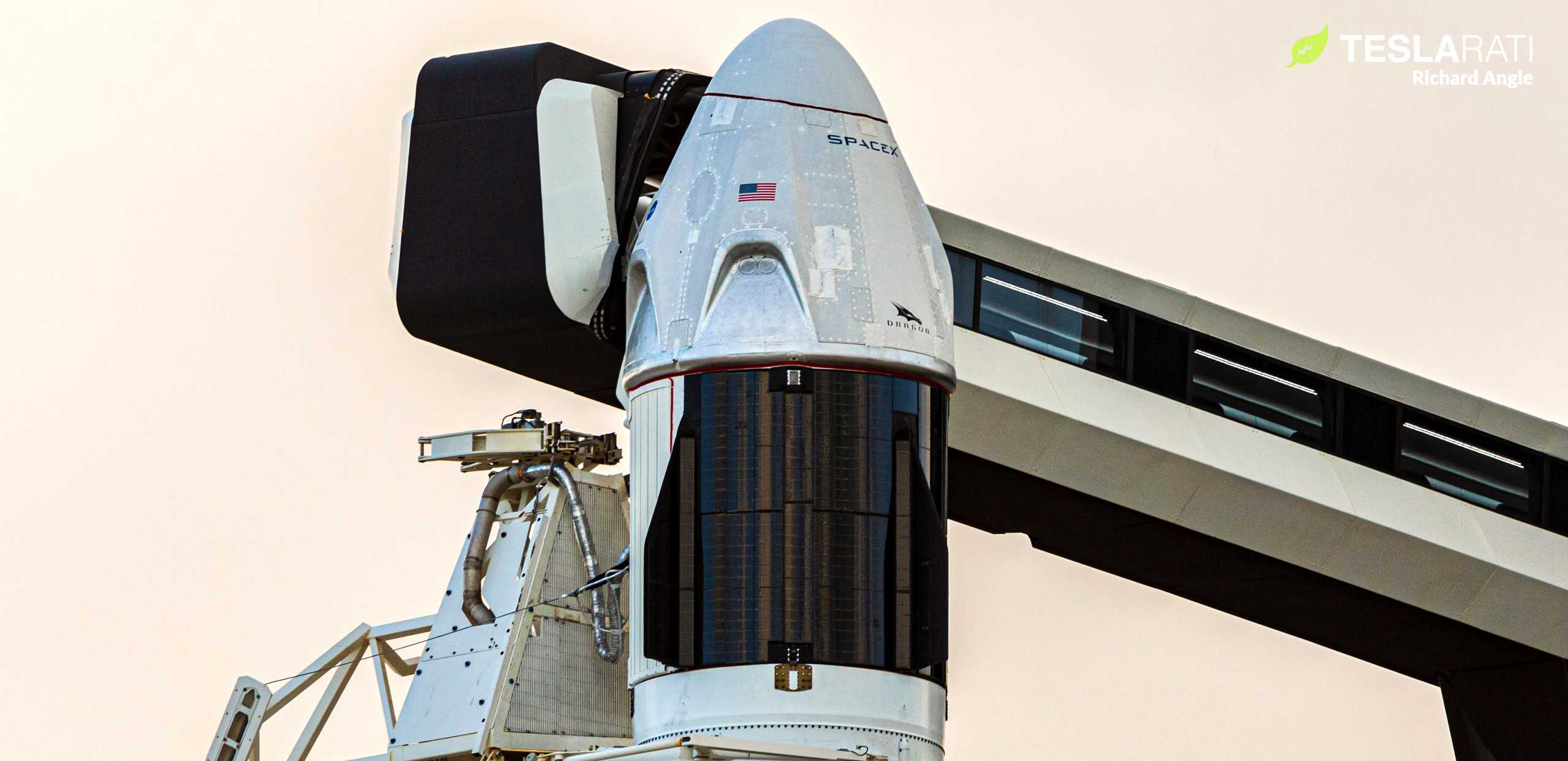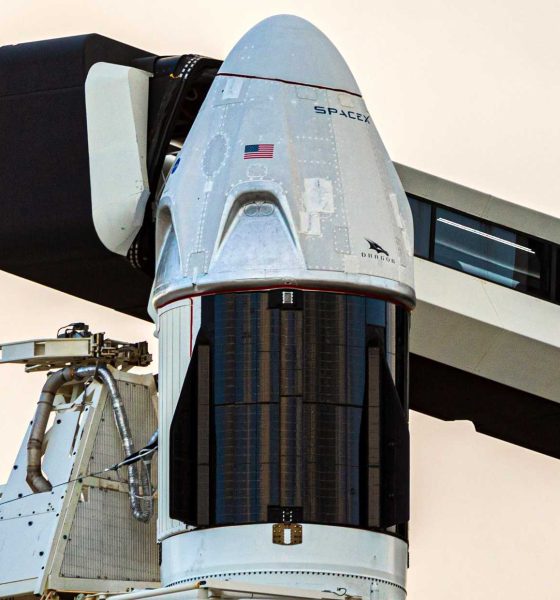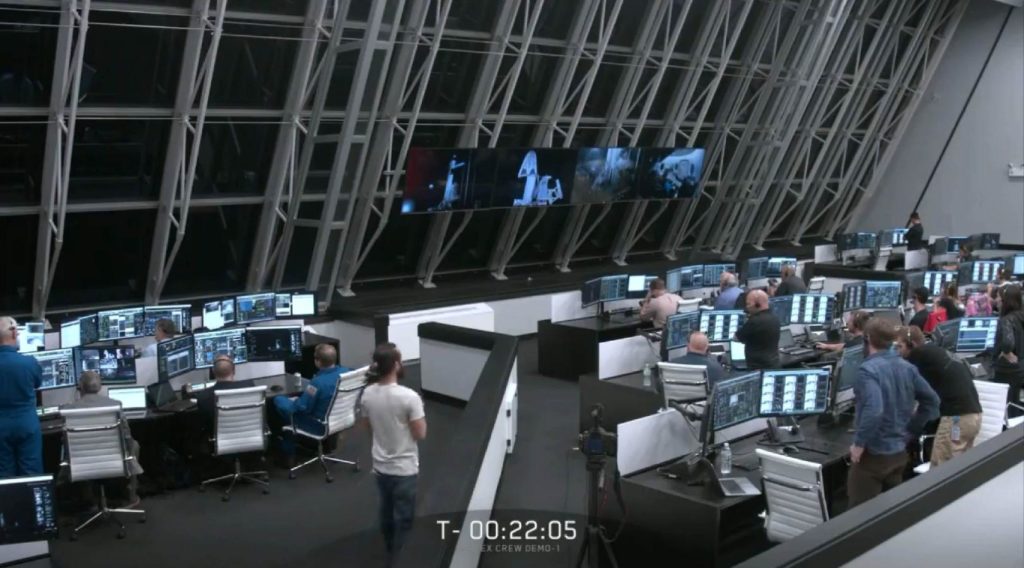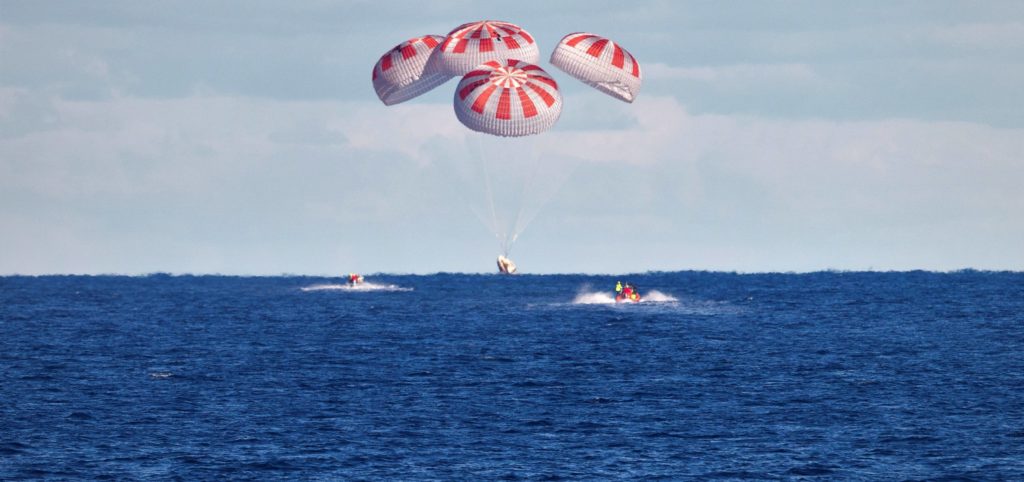

News
SpaceX's Crew Dragon is about to escape a supersonic rocket: here's how to watch live
SpaceX’s Crew Dragon spacecraft is set to attempt to escape a supersonic Falcon 9 in what will likely be the first intentional in-flight destruction of an orbital-class rocket in decades.
Known as an In-Flight Abort test, Crew Dragon’s second test flight is guaranteed to be spectacular and will thankfully be streamed live by both NASA and SpaceX. Scheduled to lift off no earlier than 8 am EST (13:00 UTC), January 18th, the IFA could also be Crew Dragon’s last uncrewed launch ever, hopefully paving the way for its first orbital flight with NASA astronauts on board just a few months from now.
For now, SpaceX’s primary focus with the IFA test is to prove that Crew Dragon can protect passengers and cargo even in the unlikely event that Falcon 9 fails in flight – after liftoff but before the spacecraft has separated from the rocket.
After several months of delays brought on by the explosion of Crew Dragon capsule C201 in April 2019 and an additional two-week slip from NASA’s first public launch date, Falcon 9 booster (B1046) and Crew Dragon capsule C205 have both completed static fire tests of their respective rocket engines and rolled out to Pad 39A on January 16th.
After at least half a year of investigation and a similar period spent redesigning and requalifying a subsection of the high-pressure propellant plumbing that feeds Crew Dragon’s SuperDraco abort thrusters, new capsule C205 successfully fired up a handful of Draco maneuvering thrusters and all 8 of its SuperDracos abort engines, simulating the burns it will have to perform during Saturday’s IFA test.

According to NASA and SpaceX, the ~48 hours between rollout and liftoff have been used to perform a dry run for future NASA astronaut launches, more or less exactly replicating the processes that will soon be used for real. Of course, Demo-2 astronauts Bob Behnken and Doug Hurley didn’t actually board the Crew Dragon spacecraft (its interior is unfinished) and will certainly not be on board come liftoff, but everything up to the point of spacecraft ingress was performed as if they will be.
Audiences will likely be treated to a rare view from inside SpaceX’s flight operations center, recently permanently relocated to Firing Room 4 of NASA’s Flight Control Center (FCC) – a facility with substantial historical ties to US human spaceflight. It was last utilized as part of Crew Dragon’s inaugural orbital launch – “Demo-1” – in March 2019.

Approximately 90 seconds after liftoff, shortly after a point of maximum aerodynamic stress called Max Q, Crew Dragon will ignite its SuperDraco abort thrusters in an attempt to prove that it can whisk astronauts to safety in even a near-worst-case scenario. After a 10-second SuperDraco burn, the spacecraft will have to stabilize itself, reenter the bulk of Earth’s atmosphere, and deploy four main parachutes for a gentle splashdown in the Atlantic Ocean.
A combined SpaceX and USAF team will recover the hopefully-intact spacecraft from the ocean, likely using the opportunity to once again simulate the process of recovering a crewed Crew Dragon and safely extracting the NASA astronauts strapped inside it.

Falcon 9 booster B1046 is expected to be “destroyed in Dragon fire”, according to SpaceX CEO Elon Musk. The Crew Dragon capsule will jettison mid-flight, leaving B1046 open to extremely abnormal aerodynamic stress that will likely tear it and the upper stage apart. NASA says SpaceX will attempt to recover as much of the expected rocket debris as possible.
Crew Dragon’s IFA test has a four-hour launch window with liftoff targeted no earlier than (NET) 8 am EST (13:00 UTC), January 18th. For a variety of reasons, this mission is uniquely susceptible to weather both at and around the launch pad and stands a good chance of slipping much later into the window, and backups are available at the same time on Sunday and Monday.
Regardless, SpaceX will provide live coverage of the test whenever it does launch, beginning around 15 minutes prior to liftoff. Teslarati photographer Richard Angle and reporter Jamie Groh will be on-site to document the events of Crew Dragon crucial – and likely spectacular – flight test.
Check out Teslarati’s Marketplace! We offer Tesla accessories, including for the Tesla Cybertruck and Tesla Model 3.

News
Tesla is not sparing any expense in ensuring the Cybercab is safe
Images shared by the longtime watcher showed 16 Cybercab prototypes parked near Giga Texas’ dedicated crash test facility.

The Tesla Cybercab could very well be the safest taxi on the road when it is released and deployed for public use. This was, at least, hinted at by the intensive safety tests that Tesla seems to be putting the autonomous two-seater through at its Giga Texas crash test facility.
Intensive crash tests
As per recent images from longtime Giga Texas watcher and drone operator Joe Tegtmeyer, Tesla seems to be very busy crash testing Cybercab units. Images shared by the longtime watcher showed 16 Cybercab prototypes parked near Giga Texas’ dedicated crash test facility just before the holidays.
Tegtmeyer’s aerial photos showed the prototypes clustered outside the factory’s testing building. Some uncovered Cybercabs showed notable damage and one even had its airbags engaged. With Cybercab production expected to start in about 130 days, it appears that Tesla is very busy ensuring that its autonomous two-seater ends up becoming the safest taxi on public roads.
Prioritizing safety
With no human driver controls, the Cybercab demands exceptional active and passive safety systems to protect occupants in any scenario. Considering Tesla’s reputation, it is then understandable that the company seems to be sparing no expense in ensuring that the Cybercab is as safe as possible.
Tesla’s focus on safety was recently highlighted when the Cybertruck achieved a Top Safety Pick+ rating from the Insurance Institute for Highway Safety (IIHS). This was a notable victory for the Cybertruck as critics have long claimed that the vehicle will be one of, if not the, most unsafe truck on the road due to its appearance. The vehicle’s Top Safety Pick+ rating, if any, simply proved that Tesla never neglects to make its cars as safe as possible, and that definitely includes the Cybercab.
Elon Musk
Tesla’s Elon Musk gives timeframe for FSD’s release in UAE
Provided that Musk’s timeframe proves accurate, FSD would be able to start saturating the Middle East, starting with the UAE, next year.

Tesla CEO Elon Musk stated on Monday that Full Self-Driving (Supervised) could launch in the United Arab Emirates (UAE) as soon as January 2026.
Provided that Musk’s timeframe proves accurate, FSD would be able to start saturating the Middle East, starting with the UAE, next year.
Musk’s estimate
In a post on X, UAE-based political analyst Ahmed Sharif Al Amiri asked Musk when FSD would arrive in the country, quoting an earlier post where the CEO encouraged users to try out FSD for themselves. Musk responded directly to the analyst’s inquiry.
“Hopefully, next month,” Musk wrote. The exchange attracted a lot of attention, with numerous X users sharing their excitement at the idea of FSD being brought to a new country. FSD (Supervised), after all, would likely allow hands-off highway driving, urban navigation, and parking under driver oversight in traffic-heavy cities such as Dubai and Abu Dhabi.
Musk’s comments about FSD’s arrival in the UAE were posted following his visit to the Middle Eastern country. Over the weekend, images were shared online of Musk meeting with UAE Defense Minister, Deputy Prime Minister, and Dubai Crown Prince HH Sheikh Hamdan bin Mohammed. Musk also posted a supportive message about the country, posting “UAE rocks!” on X.
FSD recognition
FSD has been getting quite a lot of support from foreign media outlets. FSD (Supervised) earned high marks from Germany’s largest car magazine, Auto Bild, during a test in Berlin’s challenging urban environment. The demonstration highlighted the system’s ability to handle dense traffic, construction sites, pedestrian crossings, and narrow streets with smooth, confident decision-making.
Journalist Robin Hornig was particularly struck by FSD’s superior perception and tireless attention, stating: “Tesla FSD Supervised sees more than I do. It doesn’t get distracted and never gets tired. I like to think I’m a good driver, but I can’t match this system’s all-around vision. It’s at its best when both work together: my experience and the Tesla’s constant attention.” Only one intervention was needed when the system misread a route, showcasing its maturity while relying on vision-only sensors and over-the-air learning.
News
Tesla quietly flexes FSD’s reliability amid Waymo blackout in San Francisco
“Tesla Robotaxis were unaffected by the SF power outage,” Musk wrote in his post.

Tesla highlighted its Full Self-Driving (Supervised) system’s robustness this week by sharing dashcam footage of a vehicle in FSD navigating pitch-black San Francisco streets during the city’s widespread power outage.
While Waymo’s robotaxis stalled and caused traffic jams, Tesla’s vision-only approach kept operating seamlessly without remote intervention. Elon Musk amplified the clip, highlighting the contrast between the two systems.
Tesla FSD handles total darkness
The @Tesla_AI account posted a video from a Model Y operating on FSD during San Francisco’s blackout. As could be seen in the video, streetlights, traffic signals, and surrounding illumination were completely out, but the vehicle drove confidently and cautiously, just like a proficient human driver.
Musk reposted the clip, adding context to reports of Waymo vehicles struggling in the same conditions. “Tesla Robotaxis were unaffected by the SF power outage,” Musk wrote in his post.
Musk and the Tesla AI team’s posts highlight the idea that FSD operates a lot like any experienced human driver. Since the system does not rely on a variety of sensors and a complicated symphony of factors, vehicles could technically navigate challenging circumstances as they emerge. This definitely seemed to be the case in San Francisco.
Waymo’s blackout struggles
Waymo faced scrutiny after multiple self-driving Jaguar I-PACE taxis stopped functioning during the blackout, blocking lanes, causing traffic jams, and requiring manual retrieval. Videos shared during the power outage showed fleets of Waymo vehicles just stopping in the middle of the road, seemingly confused about what to do when the lights go out.
In a comment, Waymo stated that its vehicles treat nonfunctional signals as four-way stops, but “the sheer scale of the outage led to instances where vehicles remained stationary longer than usual to confirm the state of the affected intersections. This contributed to traffic friction during the height of the congestion.”
A company spokesperson also shared some thoughts about the incidents. “Yesterday’s power outage was a widespread event that caused gridlock across San Francisco, with non-functioning traffic signals and transit disruptions. While the failure of the utility infrastructure was significant, we are committed to ensuring our technology adjusts to traffic flow during such events,” the Waymo spokesperson stated, adding that it is “focused on rapidly integrating the lessons learned from this event, and are committed to earning and maintaining the trust of the communities we serve every day.”








